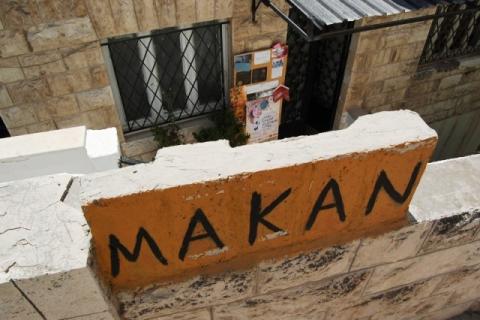.
Med Art Spaces. Beirut Art Center (BAC)
Med Art Spaces. PIST/// Interdisciplinary Project Space

Images: Courtesy of Makan / http://makanhouse.net/
The third stage of the “Med Art Spaces” project brings me to Amman, the capital city of Jordan. Located in the area of Jabal Al-Weibdeh - one of the seven hills that compose and surround the city of Amman - Makan (the “Place” in Arabic) emerges as one of the most dynamic and lively art spaces in Jordan and, I would say, in the whole Middle East region.
Open to a wide selection of activities, Makan comes up as an interdisciplinary space dedicated to experimental creativity and the multiplicity of contemporary art practices.
As usual in this context of the global art development, Makan seems to escape from the oppression of definitions and categories and to engage directly with the complexity of contemporary art, culture and society.
As the founders say: “There are days when Makan, feels like an abstract adventure, and an intangible concept, very much like the art scene in our countries”.
Focusing also on the potentiality of mobility, networking, collaboration practices and exchange Makan works both in the local and in the global field. A multi-purpose space with a great balcony looking over Amman’s downtown, that includes three studios, a documentation space, an office and - at a walking distance from the Art Space – a residency space (Beit Makan), compose this independent project established in 2003 by Ola Khalidi.
Among the last events organized by Makan we could mention the exhibition “Momentarily Learning from Mega-Events” curated by Ala Younis; the presentation of research in progress on “The International Art Exhibition for Palestine” by Kristine Khoury; the launch of Zine El-Arab, an independent uncensored Arabic Zine; the screening of “The three disappearances of Soad Hosny”, a film by Rania Stephan; a wide program of residencies projects and many other activities.
For this short interview I’ve been in touch with Samah Hijawi, whom I really thank for her availability, visual artist and member of the Makan’s core team.
Herman Bashiron Mendolicchio: Which are your main aims and activities?
Samah Hijawi: Makan is an independent dynamic space for contemporary art in Amman, Jordan, created in 2003 encouraging experimentation in concepts and production. Makan cooperates with artists with an open door for new ideas and creative suggestions, it works towards creating links between the local art scene and the region as well as internationally, also building a network of artists, art operators and spaces. Makan’s events focus on social issues and taking art into the public sphere, its projects include an artist exchange and residency program, organization and participation in workshops locally and internationally, art events including exhibitions, performances, film screenings and music, as well as provide studio spaces for artists.
HBM: Which role do art and creativity play in the contemporary society and in your geographical area?
SH: Arts have a very minimal role in society. This is mostly seen in the form of musical performances that are publicly funded from the municipality and the ministry of culture, or through festivals run by cultural centers such as British Council, French Cultural Center, Turkish, American….etc. Otherwise some visual art projects are realised in various public spaces through local NGO’s.
HBM: What does the Mediterranean space mean for you?
SH: The Med is a place through which the opportunity for exchange with similar institutions and art practitioners can engage through festivals, exhibitions and meetings / seminars. This is very evident due to the proximity of countries within the Med region, and consequently, good bonds have developed over time as a result of this.
HBM: Do you interact with other centres/realities of art and creativity in the Mediterranean? If not, will you do it?
SH: The interaction is prominent, especially in the last 5 years as a growing interest has been realised from all over the Med of the importance of this interaction.
HBM: Are you involved in any Mobility Program? How improve and promote art and artists mobility in the Med?
SH: We have collaborated with several mobility programs on different levels and for various different projects throughout the last 7 years. The involvement is on different levels. Sometimes they are the donor agency who provide travel funds for our projects, and on other occasions our relationship is seen as board members or advisors for these programs.



